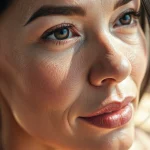Latest Innovations in Remote Health Monitoring for Seniors
Remote health monitoring continues to evolve rapidly, with breakthrough devices launched in the past year enhancing senior care technology. These innovations focus on non-intrusive, wearable sensors that provide continuous vital sign tracking, fall detection, and medication adherence reminders. Unlike previous models, many now combine AI algorithms to analyze real-time data, enabling proactive alerts before critical health events occur.
Key features setting these devices apart include long battery life, seamless integration with smartphones or home hubs, and customizable alerts tailored to individual health profiles. The ability to sync data automatically with healthcare providers improves timely interventions without overwhelming caregivers with false alarms.
Also to read : Calming techniques for those in their 90s: finding peace and tranquility in your golden years
Startups and prominent companies are actively driving these advancements. Their investments target not only hardware improvements but also robust software platforms for better data interpretation and user-friendly interfaces. This integration facilitates smooth adoption among seniors who may be less tech-savvy, emphasizing usability and accessibility.
In summary, recent innovations in remote health monitoring empower seniors to live more independently while offering caregivers precise, actionable insights, ultimately transforming elder care through technology.
Also to read : Experience compassionate living at rosewood care home dartford
Latest Innovations in Remote Health Monitoring for Seniors
Recent advancements in remote health monitoring have introduced breakthrough devices designed exclusively for seniors. These innovations emphasize ease of use, real-time data sharing, and proactive health management. Among the latest senior care technology are wearable devices equipped with fall detection, vital sign tracking, and even cognitive function monitoring. Many products now integrate artificial intelligence to analyze trends and send alerts before health episodes occur, which significantly enhances preventative care.
What differentiates these new technologies is their seamless connectivity and adaptability. For example, some systems combine environmental sensors with personal health data, offering holistic monitoring tailored to individual needs. Startups and established companies alike are spearheading this progress, focusing on customizable platforms that connect caregivers and medical professionals directly to the senior’s data.
Prominent developers emphasize design features like longer battery life, user-friendly interfaces, and multi-device synchronization. This user-centric approach removes traditional barriers, encouraging wider adoption in daily senior care, ultimately supporting more independent and safer living environments.
Clinical Trials and Research Validating New Technologies
Recent clinical trials play a crucial role in confirming the efficacy and safety of advanced remote health monitoring devices tailored for seniors. These studies rigorously evaluate breakthrough devices by measuring health outcomes such as reduced hospital admissions and early detection of critical events. For example, trials have demonstrated that continuous vital sign tracking combined with AI-powered alerts significantly lowers the incidence of emergency interventions.
Published results consistently show improved management of chronic conditions like hypertension and heart failure through remote monitoring research. This evidence supports wider adoption of these technologies in senior care settings. Additionally, ongoing research projects focus on expanding remote health monitoring to address cognitive decline and fall prevention, areas critical in elderly health validation.
Prominent companies and academic institutions collaborate closely in these clinical studies, ensuring that new devices meet both technical standards and real-world effectiveness. This concerted effort strengthens the link between lab-based innovation and tangible benefits for seniors, advancing the reliability and trustworthiness of senior care technology.
Clinical Trials and Research Validating New Technologies
Recent clinical trials have rigorously evaluated the safety and effectiveness of remote health monitoring devices for seniors. These studies often measure improvements in chronic condition management, fall prevention, and early illness detection. For example, trials involving wearable sensors have demonstrated significant reductions in emergency room visits and hospitalizations by enabling timely medical interventions.
Published results confirm that remote monitoring research consistently shows enhanced health outcomes, particularly in managing heart disease, diabetes, and respiratory conditions among elderly populations. Data from these studies also validate that breakthrough devices can reliably track vital signs such as heart rate, oxygen saturation, and blood pressure with accuracy comparable to traditional clinical equipment.
Ongoing research projects aim to expand these findings by incorporating AI-driven analytics to predict health deterioration before symptoms arise. Additionally, some studies explore integrating behavioral and cognitive monitoring, broadening remote health monitoring’s scope beyond physical health. These efforts will provide deeper insights into personalized care plans for seniors, promoting longer independence.
Through clinical validation, these technologies transition from promising concepts to proven tools, strengthening trust among seniors, caregivers, and healthcare professionals in adopting remote health monitoring systems.
Latest Innovations in Remote Health Monitoring for Seniors
The latest remote health monitoring devices for seniors showcase remarkable advances in precision and usability. Over the past year, breakthrough devices now feature improved sensor accuracy and multi-parameter tracking, including heart rate, oxygen levels, and sleep quality. Many systems incorporate AI-driven analytics, enabling early detection of health anomalies before symptoms manifest.
Notably, new technologies emphasize seamless integration across platforms—smartphones, tablets, and home health hubs—making real-time data accessible for both seniors and caregivers. Enhanced battery life and lightweight, ergonomic designs encourage continuous wear without discomfort, a crucial factor in sustained monitoring.
Prominent companies alongside startups are at the forefront of these innovations, investing heavily in customizable software tailored to individual health profiles. This trend ensures alerts are relevant and minimize false positives, addressing a common concern in senior care technology.
In summary, these breakthrough devices blend advanced hardware with intelligent software, setting a new standard for remote health monitoring in eldercare. They prioritize both clinical reliability and end-user acceptance, empowering seniors to maintain independence while providing caregivers with essential insights.
Practical Benefits for Seniors and Caregivers
Remote health monitoring technologies significantly enhance senior independence by enabling continuous support without constant physical supervision. Seniors can manage daily activities with confidence, knowing that breakthrough devices monitor vital signs and detect emergencies like falls in real time. This empowers them to maintain an active lifestyle while feeling secure.
Caregiver support improves notably due to quicker response times facilitated by automatic alerts that reduce guesswork and unnecessary check-ins. By focusing only on verified health events, caregivers experience less burnout and better allocate their time. This system also fosters peace of mind for families and healthcare professionals.
Furthermore, these innovations contribute to reducing hospital visits and overall healthcare costs. Continuous monitoring helps identify health changes earlier, promoting timely interventions that prevent complications. The cost-effectiveness of remote health monitoring enhances accessibility, allowing more seniors to benefit from quality care without exhausting resources.
In sum, these advances deliver practical, impactful benefits by improving quality of life for seniors and easing caregiver burdens through reliable, efficient technology designed for daily use.
Latest Innovations in Remote Health Monitoring for Seniors
In the last year, breakthrough devices in remote health monitoring have redefined senior care technology with enhanced functionality and smarter insights. These cutting-edge systems offer multi-sensor platforms that track vital signs such as heart rate, oxygen saturation, and mobility patterns continuously and accurately. Incorporation of AI analytics enables these devices to detect subtle changes signaling health risks, allowing early intervention.
Key differentiators include adaptive alerts that personalize notifications based on the senior’s unique health profile, reducing false alarms and caregiver fatigue. Moreover, seamless interoperability with smartphones, tablets, and home hubs ensures data accessibility for seniors and healthcare teams alike. Wearable designs emphasize comfort and extended battery life, encouraging consistent use without disruption.
Prominent companies collaborate closely with innovative startups to push boundaries in user-friendly interfaces and customizable software solutions. Their focus on combining hardware precision with intelligent senior care technology supports seniors in maintaining independence while providing caregivers actionable data. This fusion of innovation and practicality marks a significant evolution in remote health monitoring aimed explicitly at eldercare.










